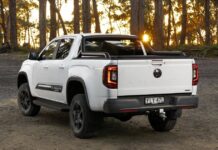The 1990s marked a pivotal decade in automotive history, much like it did in culture with the rise of Britpop and political shifts. While Dolly the sheep captured the world’s imagination, the car industry was undergoing its own profound transformation. Old designs gave way to sleek, aerodynamic vehicles packed with innovation, and Ford emerged as a standout in this new era.
Under the guidance of legendary engineer Richard Parry-Jones, Ford launched a series of models that redefined what a car could be. These weren’t just products—they were statements of engineering excellence and design innovation. Among the most iconic was the 1993 Ford Mondeo.
The Mondeo wasn’t just another car; it was a benchmark. It offered incredible value for money, even in its premium GLX trim, with features like electric windows, a sunroof, and power steering available for under £15,000. But price wasn’t the only factor. Its superior dynamics, safety features, and clever packaging set it apart from competitors like the Vauxhall Vectra and Peugeot 405.
The Mondeo handled better than any other front-wheel-drive saloon on the road, offered a smooth and well-cushioned ride, and provided precise steering. Combined with its excellent ergonomics and comfortable seating, it’s no surprise that Ford sold over 130,000 Mondeos in its first year. This success cemented Ford’s position in the market, even surpassing the popular Ford Sierra.
The Ford Mondeo estate was equally well-received, proving that Ford’s designs resonated across different vehicle types. The 1994 Ford Mondeo Estate, affectionately known as the “Cayman Blue,” carried one from infancy to adulthood, showcasing not just its practicality but its lasting appeal.
Ford’s success in the 1990s demonstrated that cars could be both desirable and reliable, setting a standard that continues to influence the industry today












































